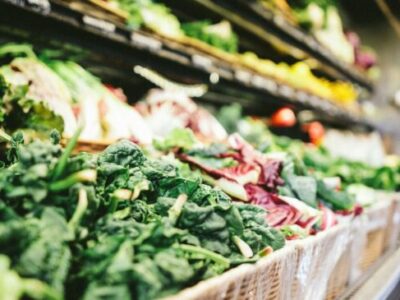The United Nations estimates that more than 600 million people worldwide will face hunger in 2030. Reducing food loss and waste can help provide healthy diets to a growing global population while reducing environmental impact.
While food loss and waste are often discussed together, although they are two separate issues.
- Food Loss occurs upstream and is the percentage of food lost from farm harvests, transport, storage, wholesale, and processing. In 2021, the UN estimated food loss at 13.2%.
- Food Waste occurs in downstream distribution or consumption. In 2022, the UN estimated that 19% of global food, totaling 1.05 billion tons, was wasted, with household waste accounting for 60%.
Food loss. Meat accounts for 3% of food loss and dairy for 5%, with the remainder occurring from fruits, vegetables, cereals, roots, and tubers, according to McKinsey in 2022. They also estimated that 1/3 of harvest loss is due to farmers growing more than they can sell. This may be because poor infrastructure delays getting food to market or the lack of cold storage or adequate packaging that causes spoilage en route. And 1/3 is due to the food not meeting customer expectations (shape, color, texture, etc.). In other words, 2/3 of the loss is for edible food.
Food waste. Several organized efforts to address the problem have focused on food waste, perhaps because it is more visible. It occurs when edible food is discarded during distribution to a retailer or consumption at restaurants, food service providers, or homes (for example, when people discard leftovers). When we waste food, we also waste all the energy and water it takes to grow, harvest, distribute, and package it. And if food goes to the landfill, it is likely to produce methane—a greenhouse gas even more potent than carbon dioxide.
In addition, a lot of water is used to produce food. According to the World Bank, 70% of freshwater globally is used for agriculture. So, the portion allocated to lost and wasted food is estimated to be approximately 25% of the world’s freshwater supply.
Further, the global agriculture sector is responsible for half of the methane (CH4) emissions, two-thirds of nitrous oxide (N2O), and 3% of carbon dioxide (CO2). That means the portion assigned to food loss and waste is about 8% of global emissions.
What can companies do?
Food Loss
- Improve communication and transparency among the farmers, distributors, processors, and retailers in the value chain.
- Procurement contracts can include incentives for loss reduction efforts.
- Entrepreneurs can innovate and create new products, for example, by changing byproducts into new ingredients and using food that would otherwise be lost.
Food Waste
- Restaurants can reduce portion sizes. Research in 2013 found that in the United States, restaurants consistently offer portion sizes that are two to three times greater than what the average customer should be consuming in a meal.
- Restaurants and commercial food service providers can implement predictive ordering technology to obtain more accurate data and better understand food order patterns. This will allow them to exercise more control over kitchen inventory and operations.
- Restaurants and commercial food service providers can implement digital systems to inventory food waste and identify how much and where food is wasted.








